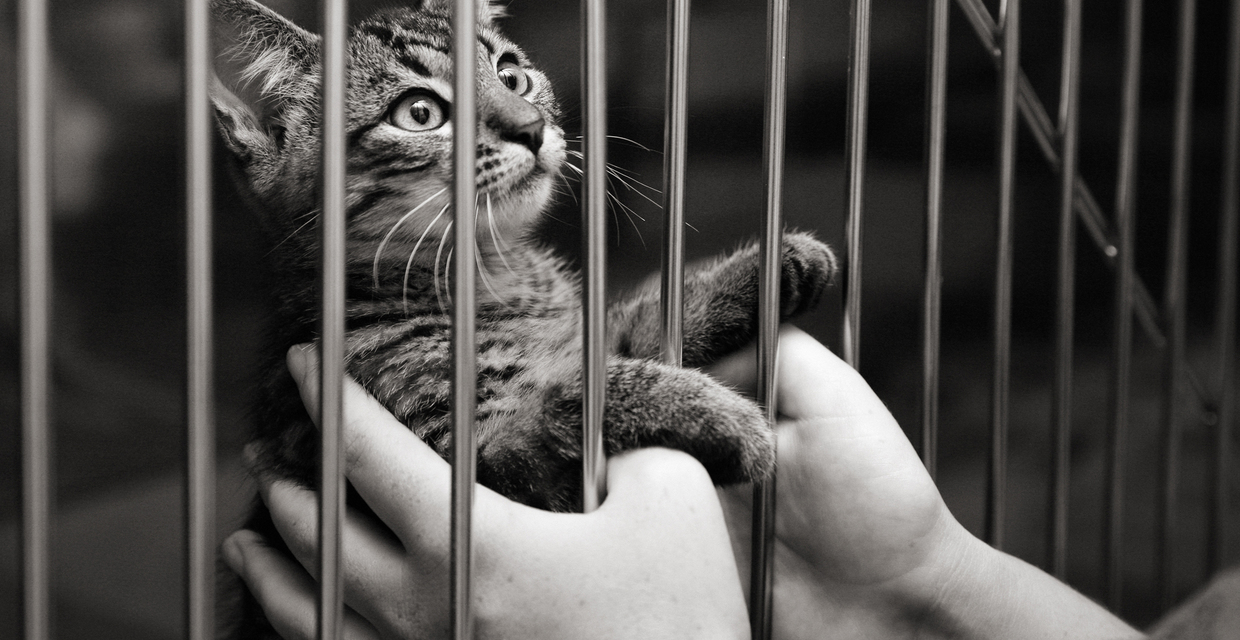The sad truth about how little we sometimes value women’s lives in cases of abuse
- By Shelley Flannery
How many times have you seen the ubiquitous ASPCA commercial with the sad-eyed dogs and cats looking up in slow motion while Sarah McLachlan sings “In the arms of an angel…” in the background? It hits you in the back of the throat, no doubt leading you to tear up or reach for your phone to make a donation.
It’s only natural to feel this pull toward animals in need. Research by two sociologists from Northeastern University suggests people feel varying levels of empathy for humans versus dogs, and as it turns out, most of us show more compassion for animals than adult human beings. In the study, participants were each given a fictional news story to read about an act of violence in which a victim was beaten with a baseball bat. Everything was the same in each story except for the victim. Participants were then asked to rate their level of empathy for the victim. Overall, the study found adults had more empathy for certain victims over others. The hierarchy went like this, beginning with the group that elicits the most empathy from adults: human babies, puppies, adult dogs and, finally, other adult humans.
Perhaps that, at least in part, explains why there are 13,500 animal shelters and rescue groups in the U.S. compared to 1,887 domestic violence programs, of which only 70 percent offer emergency shelter services. It also bears mentioning that there are more women in the U.S. than pets—166 million women versus 134 million cats and dogs in people’s homes according to 2019 data.
Does that indicate that Americans are more empathetic toward animals who have been abused than people?
“The answer is a resounding yes from me,” says Alexis Moore, an attorney in California and author of Surviving a Cyberstalker. “Even in the 21st century and with all the social media and what have you, there is, unfortunately, still a stigma surrounding domestic violence, and violence against women in general.”
The Stigma Is Stifling Us
When it comes down to it, we need to erase the stigma of domestic violence to save lives.
“Domestic violence, it’s killing folks—law enforcement, women, men, children,” says Moore, who herself escaped an abuser. “I have a sense of urgency but also this boiling anger inside because I know lives could be saved.”
Moore worked on a domestic violence campaign with RedRover, an animal welfare organization, back in 2010. It was centered on the issue of domestic violence victims being able to keep their pets in shelter with them when they escape an abuser. It was successful, she says, because of the pet component.
“I wanted to help because I had to leave behind my pets when I escaped, and the response we got [from the campaign] was interesting,” Moore says. “A lot of folks felt more comfortable saying, ‘Oh, yes, I would feel really bad if someone had to leave their dog or their pets behind.’ The fact that there was an animal in the mix with domestic violence, that did help, I think.”
President and CEO of RedRover Nicole Forsyth says it’s not necessarily that people care more about animals than humans, it’s that there are many people out there who don’t understand the dynamics of domestic violence and the pet aspect makes such situations more relatable.
“When we talk to our supporters, our donors, about the decisions survivors have to deal with, all of a sudden they get it. They can put themselves in a survivor’s shoes and say, ‘Oh my gosh, I would never leave my pet behind with an abuser. Those decisions are way more complicated and difficult than I originally imagined,’” Forsyth says. “And so, we’re finding from very anecdotal evidence that domestic violence shelters are getting more donors who are coming from the animal world because they now get it. They’re able to extend that empathy, which maybe they’ve somewhat blocked through their own lives.”
What We Can Do
Moore says the onus is on the national and state domestic violence coalitions and advocacy organizations to erase the stigma.
“We need to get our national and state folks to the table to start exposing the realities of domestic violence victims face. Sadly, even during Domestic Violence Awareness Month [in October], I was waiting and waiting and waiting for a commercial or a PSA or something to appear on my phone or looking at the TV, and … nothing. So, it just reinforces that we have a long way to go. Maybe we need to look to the animal welfare groups as being guideposts for where the domestic violence agencies need to go.”
Forsyth is doing everything she can to bridge the two causes.
“There’s so much overlap between animal and human causes, and RedRover has a role in really making people understand that all of these—the suffering that we experience on this planet—it’s all interconnected,” she says. “Whether it’s animal neglect, human suffering, even environmental crises, they’re all interconnected, and when we see the areas of our society that are most in trouble, there’s always animal abuse at those intersections. So, to me, if we don’t solve them all interconnectedly, we’re just putting Band-aids on them.”
As for what individuals can do to make a difference, Moore suggests speaking up.
“We need victims to come forward and share their stories, even if they have to do it anonymously,” she says. “Write letters, sign petitions—anything where you can say to Congress and say to the agencies, ‘We need you to spend more funding and time on awareness of the fact it’s not such an easy path for a victim to leave.’”
Interested in making a difference? Get inspired by the ‘Five Awake’ Women Who Changed Louisiana Laws.
Content retrieved from: https://www.domesticshelters.org/articles/ending-domestic-violence/do-women-get-as-much-compassion-as-animals?utm_source=newsletter&utm_medium=email&utm_campaign=march1.

